Victorian porches, with their ornate detailing and welcoming layouts, blend historical charm with modern functionality. From wraparound designs that extend your living space to intricate fretwork and gingerbread trim that nod to 19th-century craftsmanship, these ideas show how to reimagine a classic porch for today’s lifestyle. Whether you’re aiming for a pastel color scheme reminiscent of the Queen Anne era or adding stained glass accents to catch the light, the following 20 ideas will help you create a porch that’s as beautiful as it is inviting. Each concept highlights key Victorian elements, while offering tips on materials, décor, and practical considerations.
1. Wraparound Porch
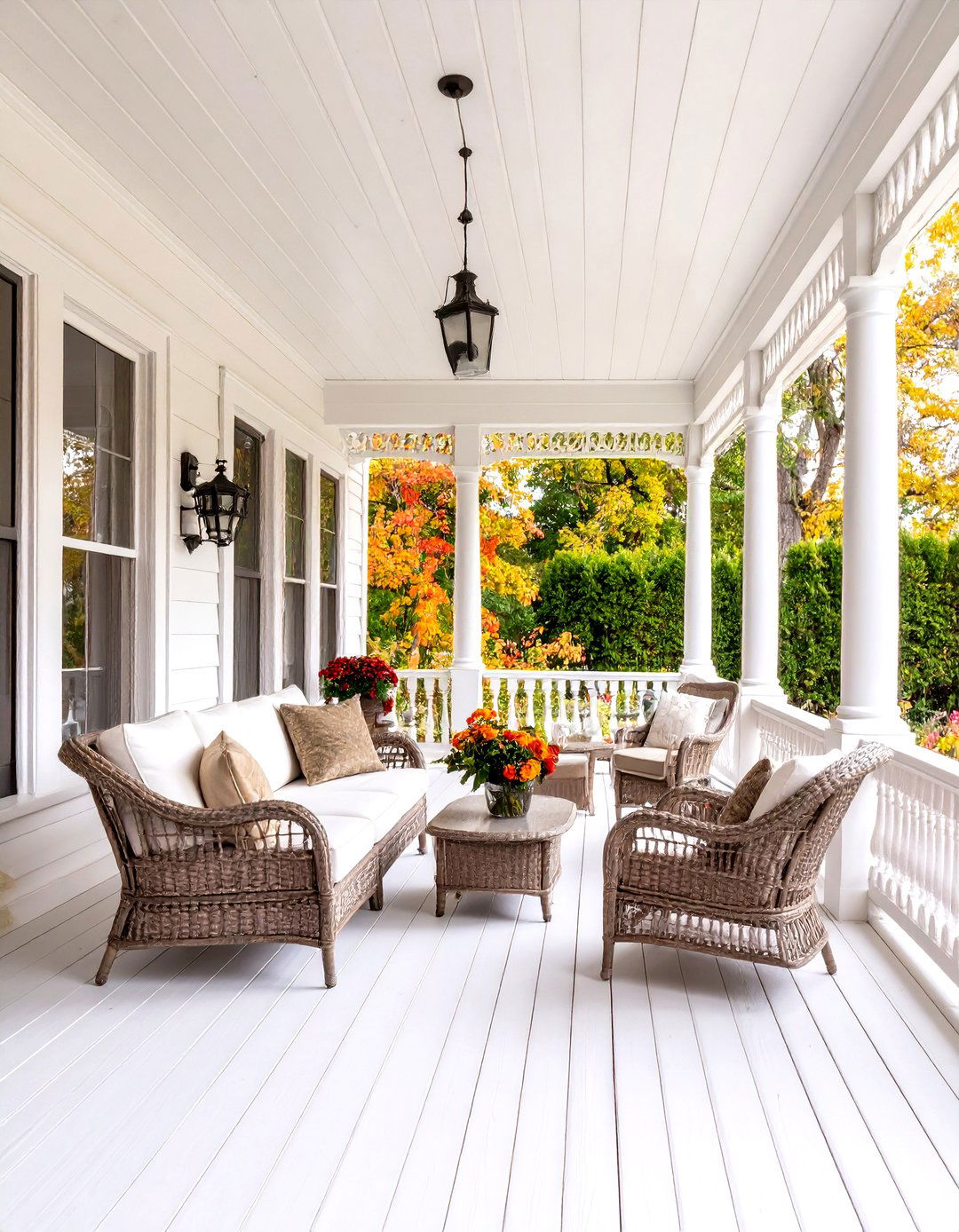
A full or partial wraparound porch creates an expansive outdoor living area that embraces multiple sides of your home, enhancing both curb appeal and functionality. This style was popular in Victorian times for its ability to provide varying viewpoints and promote natural ventilation, making it perfect for enjoying breezes on warm days. Modern interpretations may integrate durable composite decking and weather-resistant railings that mimic historic wood profiles, ensuring longevity with minimal upkeep. Consider adding multiple seating zones—such as a dining nook at the front and a lounging area at the side—to maximize versatility.
2. Ornate Gingerbread Trim
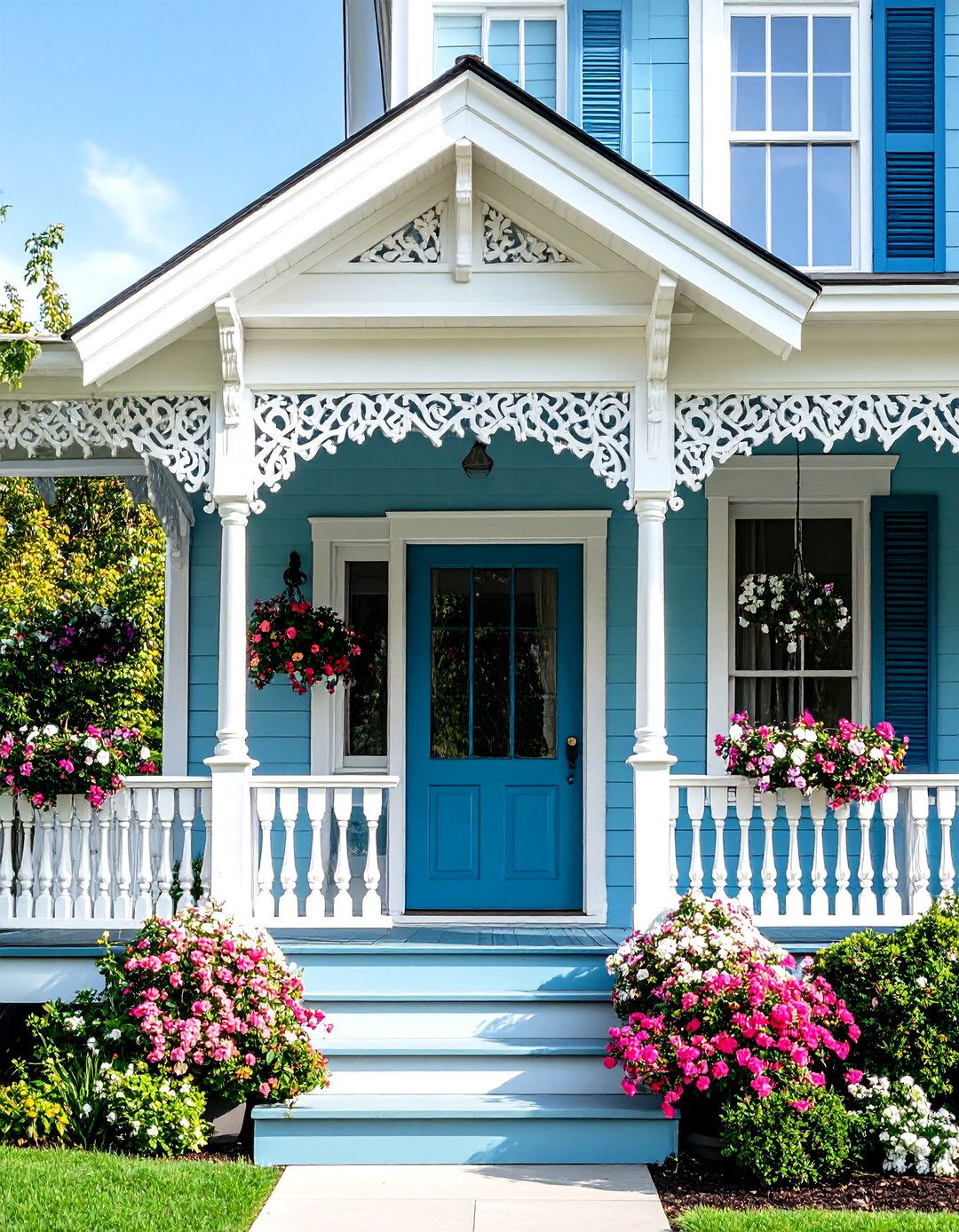
Gingerbread trim, characterized by its elaborate cut-out patterns, is a hallmark of Victorian architecture. Applied along rooflines, porch eaves, and balustrades, this decorative woodwork instantly transforms a simple porch into a showpiece. For authenticity, artisans can recreate traditional scroll‐sawn motifs using rot-resistant cedar or PVC alternatives for reduced maintenance. Painting the trim in contrasting hues helps accentuate its intricate shapes, whether you choose crisp white against a bold body color or complementary creams and taupes for a subtler effect.
3. Intricate Spindlework Railings
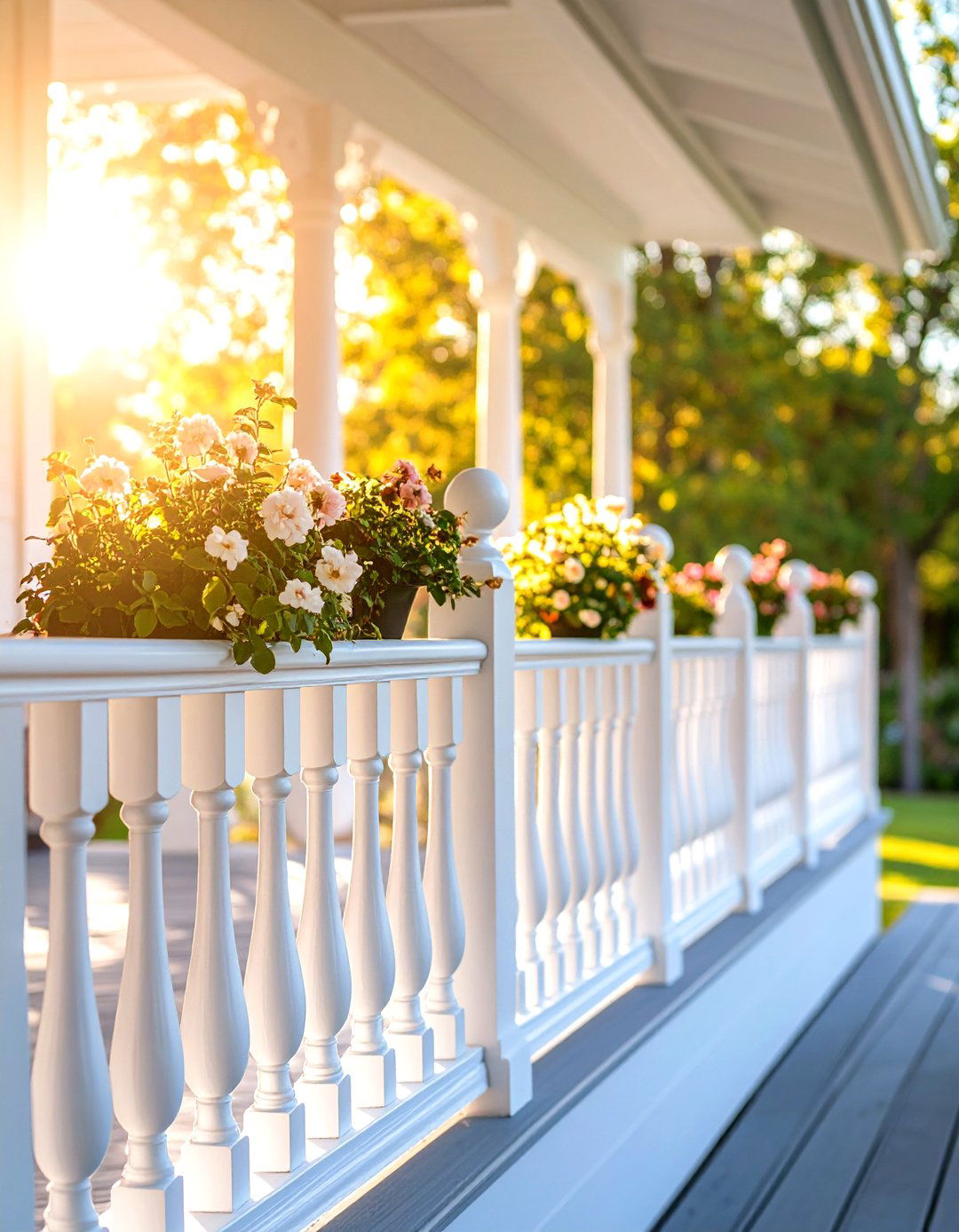
Delicately turned spindles in the railing infuse a porch with visual rhythm and texture. Victorian craftsmen often employed lathe‐turned balusters in uniform or varied patterns, creating head-turning designs. Homeowners today can source pre-turned spindles in wood or aluminum, pairing them with matching handrails and base rails for a cohesive look. For a contemporary twist, mix spindle sizes or paint select elements in an accent shade to draw attention to the detailed craftsmanship, while ensuring the rails meet modern safety codes.
4. Fretwork Arches and Brackets
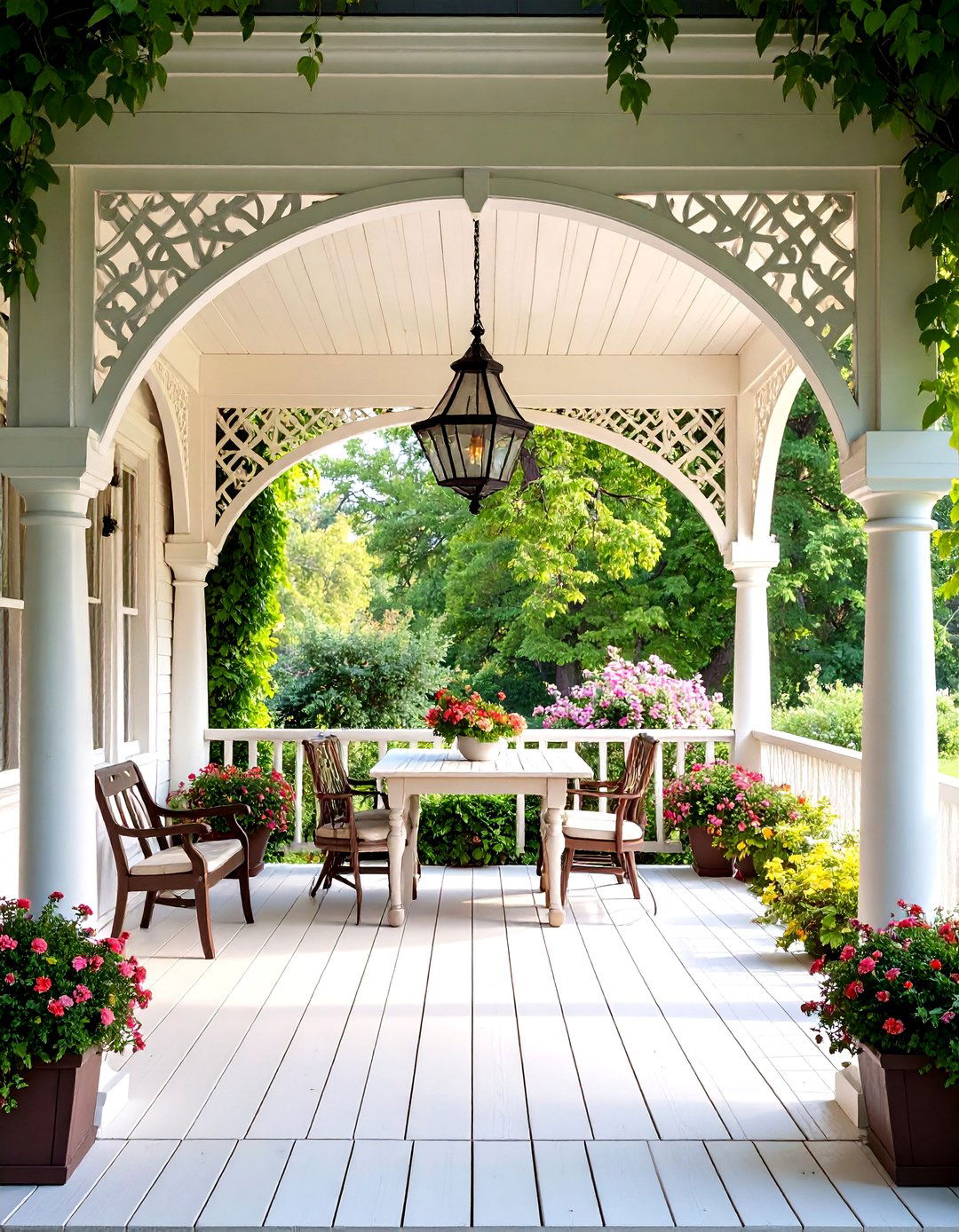
Fretwork involves decorative, geometric wood patterns cut into archways or bracket supports under the porch roof. These brackets not only bear load but also serve as focal points, framing the entrance with Victorian flair. CNC machines can reproduce historic templates, allowing you to choose from Gothic arches, quatrefoils, or sunburst designs. Position fretwork at each bay or between columns to create repeating motifs. Highlighting these elements with strategic lighting at night will cast intricate shadows, elevating the porch’s architectural drama.
5. Pastel Color Palette
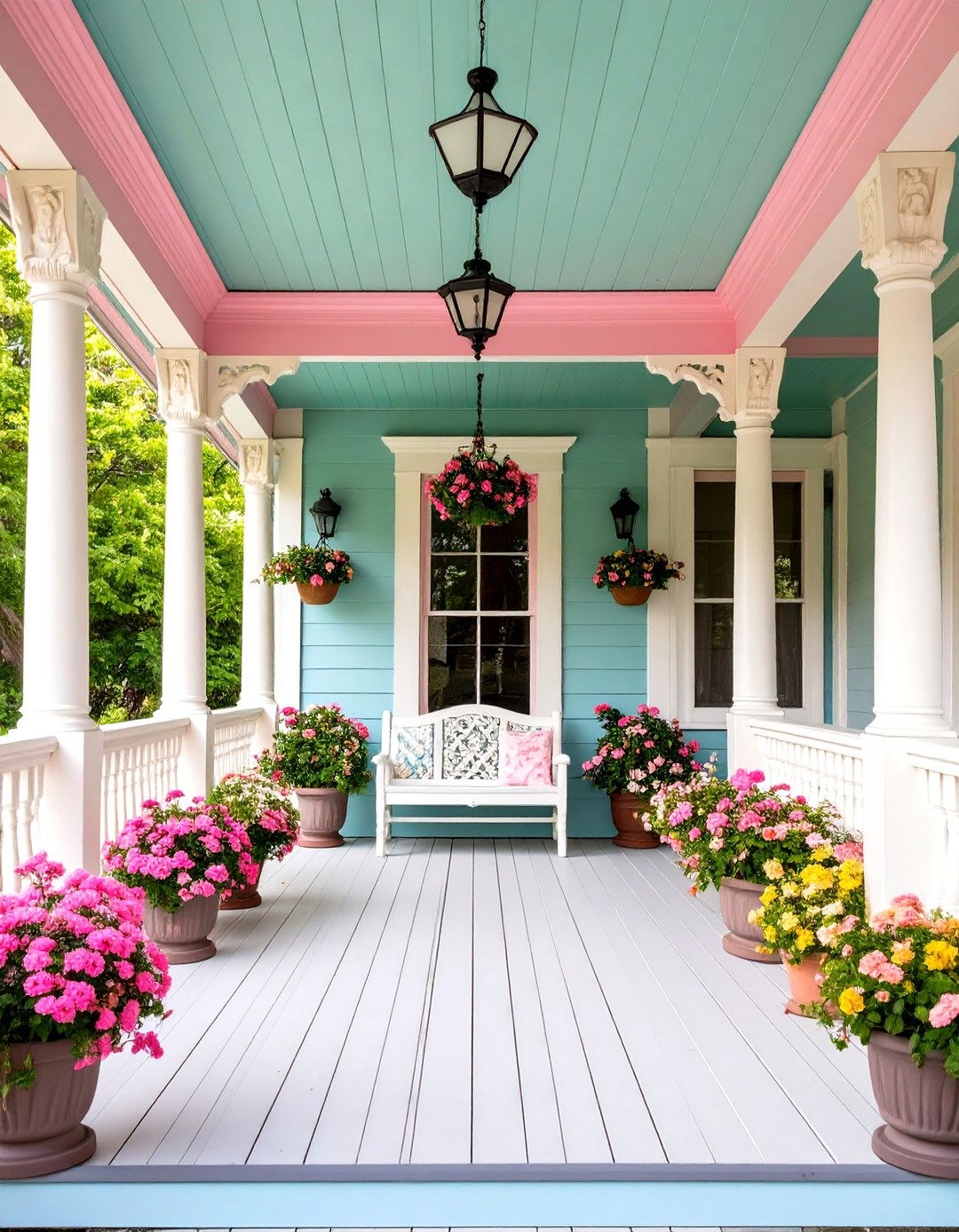
Victorian porches famously showcased three or more paint colors, often in pastel tones that highlighted architectural details. Think mint green ceilings paired with rose-pink trim and cream columns. This polychrome approach emphasizes depth and dimension, guiding the eye along moldings and panels. Modern palettes might substitute softer neutrals for historic brights, like dusty blue and blush accents, to harmonize with surrounding landscaping. Always test sample boards in various light conditions to ensure the final scheme captures the intended mood.
6. Stained Glass Accents
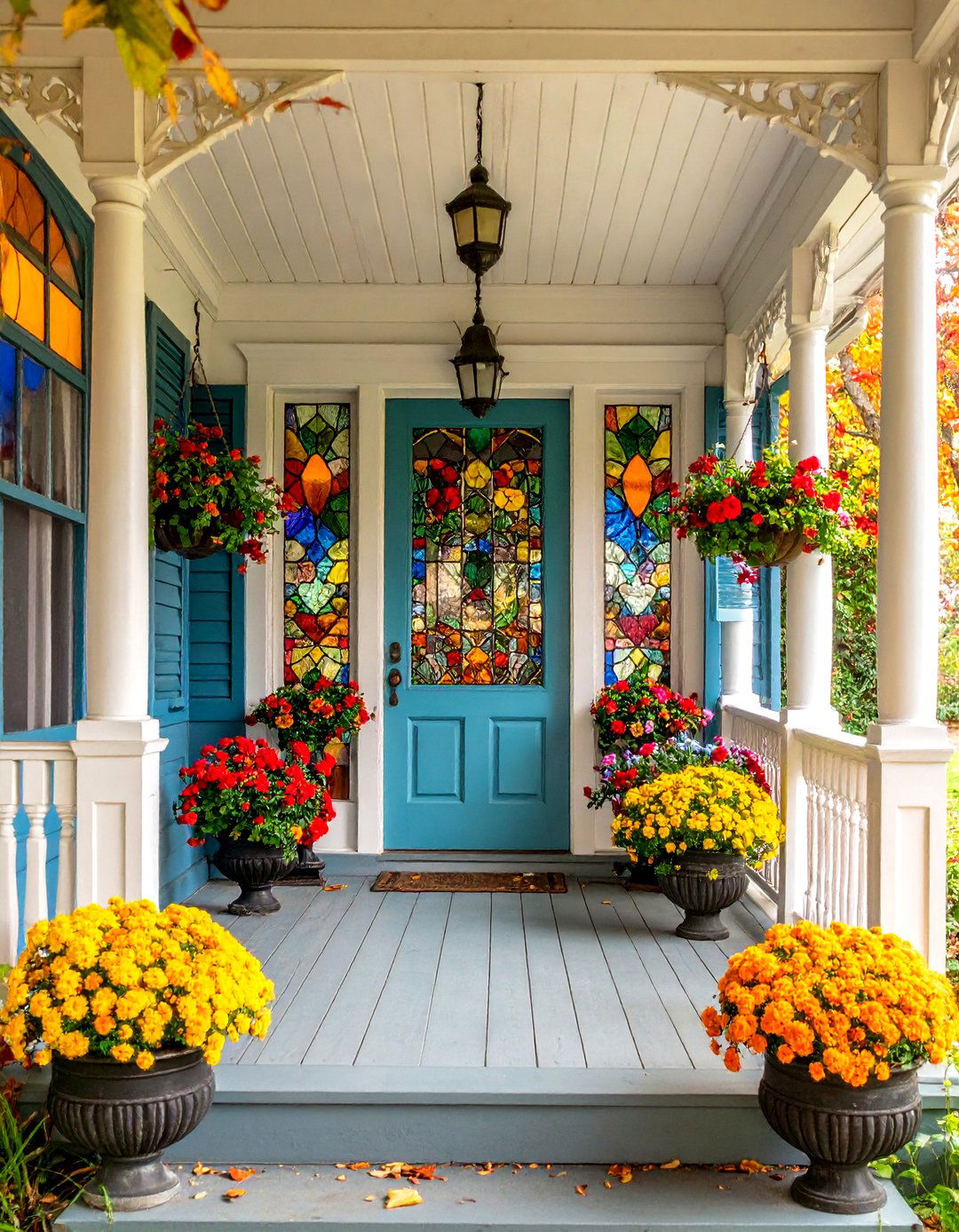
Incorporating stained glass panels in sidelights, transoms, or small windows adds color and historical authenticity. Victorian artisans often used pressed-glass tiles in floral or geometric patterns. Contemporary manufacturers replicate these designs with tempered or laminated glass for safety. Even small inserts above entrance doors or in the porch roof canopy can cast jewel-toned light onto the floor below. For a coordinated look, mirror the glass motifs in decorative cushions or outdoor rugs.
7. Patterned Floor Tiles
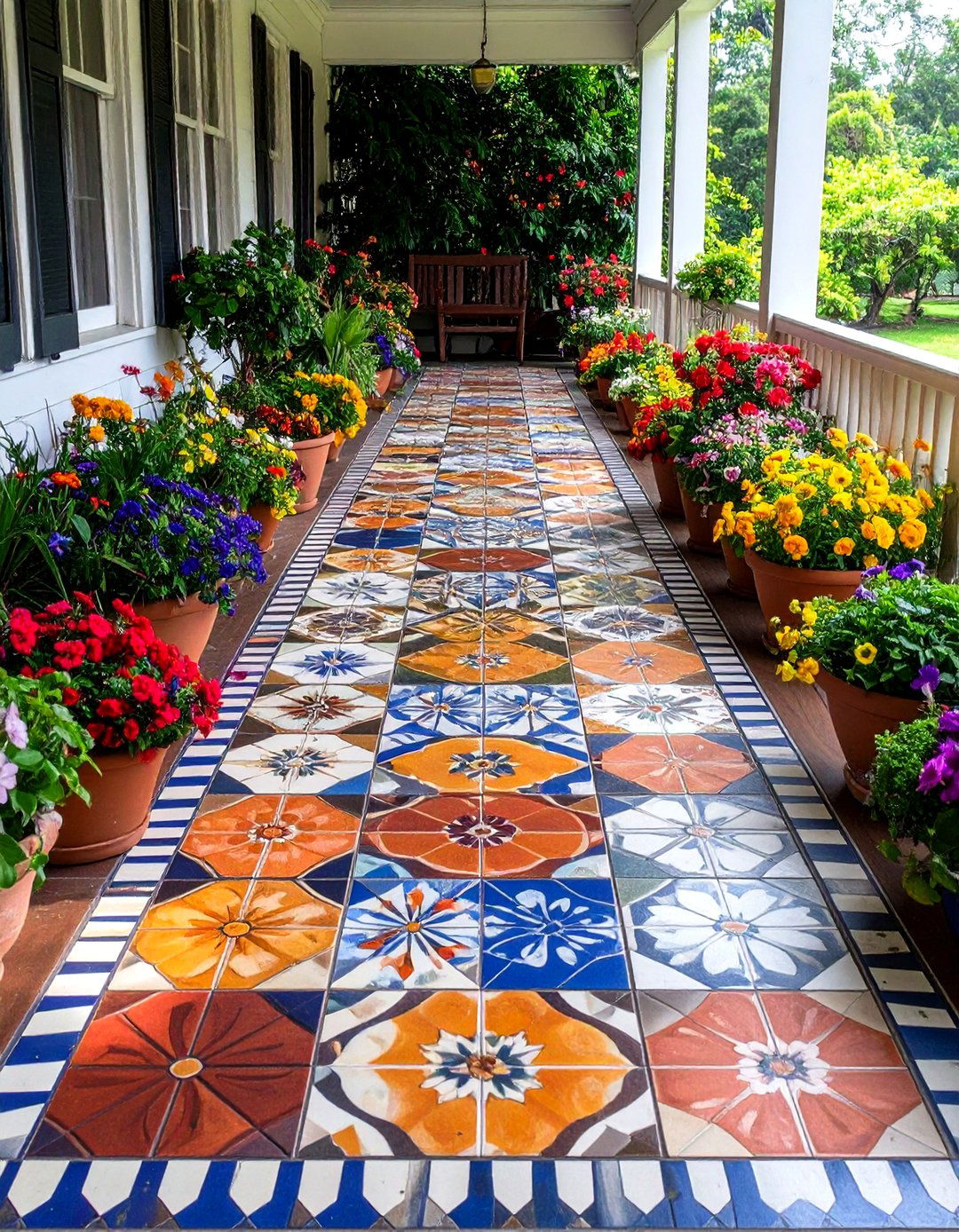
Colorful encaustic or ceramic tiles laid in repeating Victorian patterns make a grand statement underfoot. Traditional motifs include quatrefoils, rosettes, and checkerboard borders. Porcelain tiles mimic historic designs with modern durability and slip resistance. Installing tile borders around a central medallion or creating herringbone insets provides visual interest and delineates seating areas. Pair with neutral-toned furniture to let the floor’s artistry shine.
8. Painted Ceiling (Haint Blue)

Painting the porch ceiling a pale “haint blue” hue repels insects and honors Southern Victorian tradition. The soft blue is said to mimic the sky, thus confusing wasps and other bugs. This paint treatment also visually lifts the ceiling height, creating an airy atmosphere. Combine with crisp white trim and complementary floor colors for a cohesive palette. Opt for high-quality exterior paint with UV protection to maintain vibrancy over time.
9. Victorian Lighting Fixtures
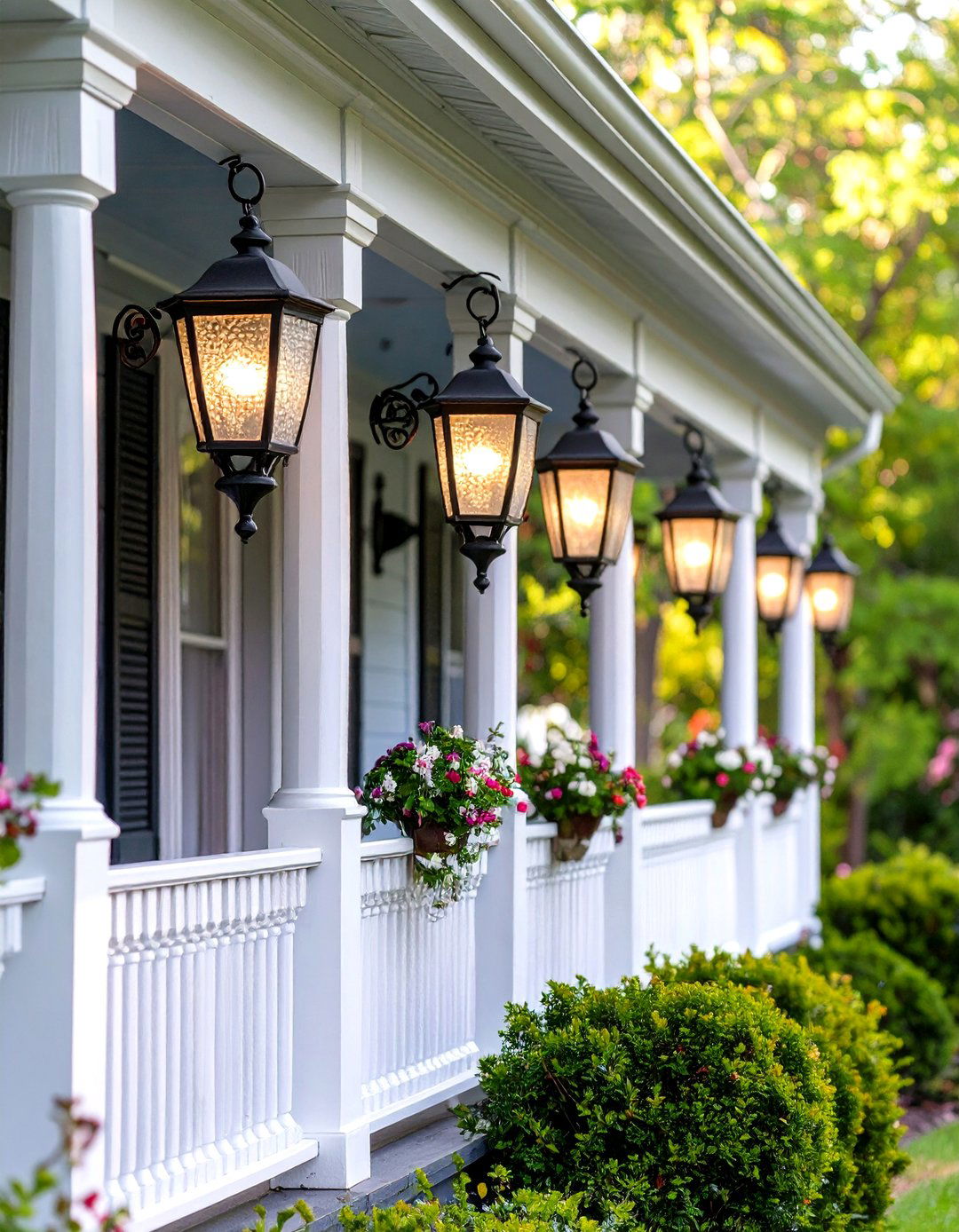
Classic lantern sconces and hanging gas-lamp-style pendants enhance nighttime ambiance and historical character. Look for brass or wrought-iron finishes with clear or seeded glass panels. Hardwired LED versions offer energy efficiency while preserving period aesthetics. Place wall lanterns flanking the entry door and pendant fixtures over seating zones to balance light distribution. Incorporate low-profile uplights at fretwork brackets to dramatize architectural details after dusk.
10. Decorative Columns
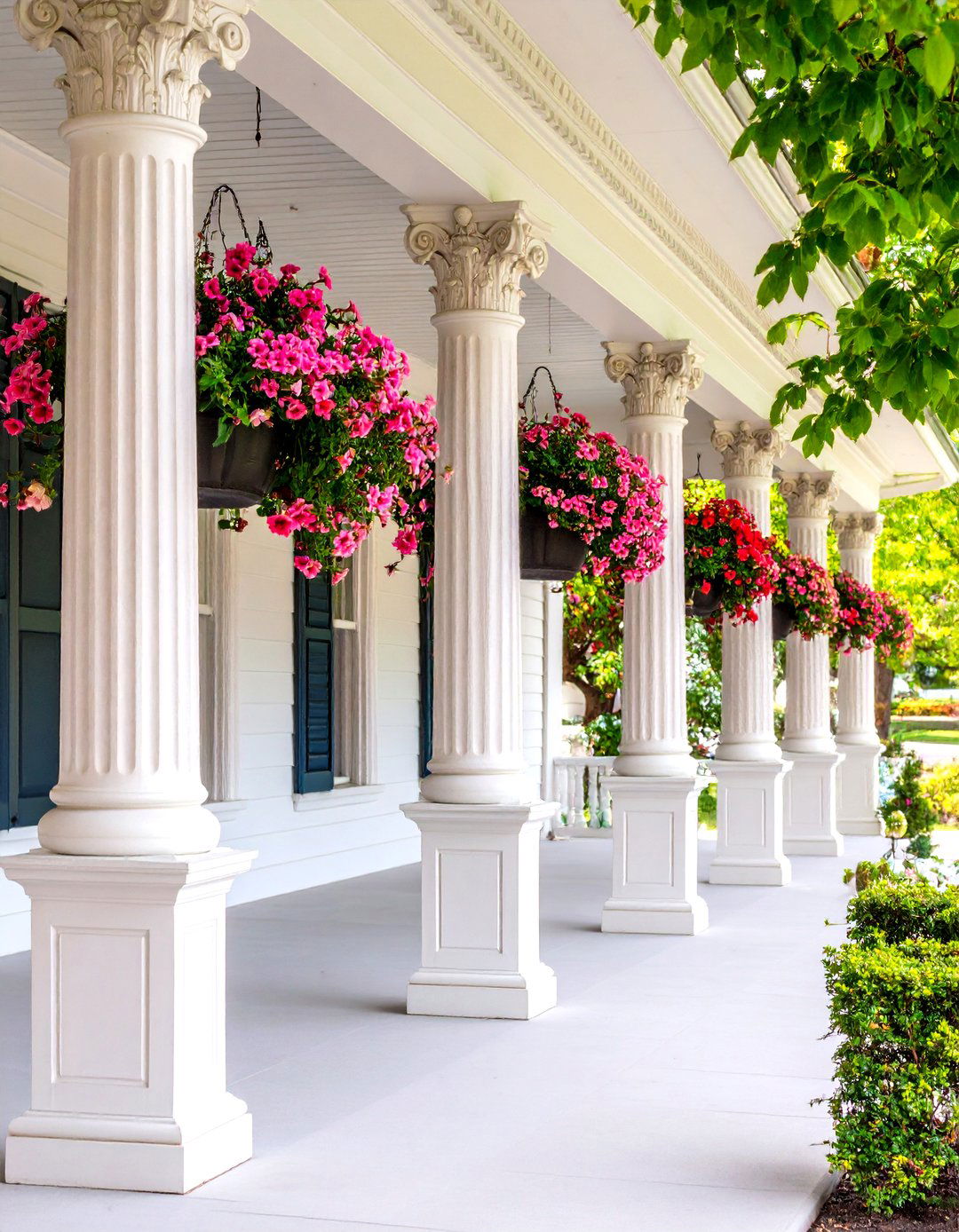
Columns with turned shafts, fluted details, or paneled bases provide structural support and style. Victorian porches often featured tapered or octagonal posts resting on solid piers. For a faithful reproduction, select materials like pressure-treated wood or fiberglass‐reinforced polymer (FRP) that withstand the elements. Pair paired columns at entry points and single posts elsewhere for rhythm. Painting columns in an accent shade will highlight their form against the porch ceiling and flooring.
11. Hanging Plant Baskets
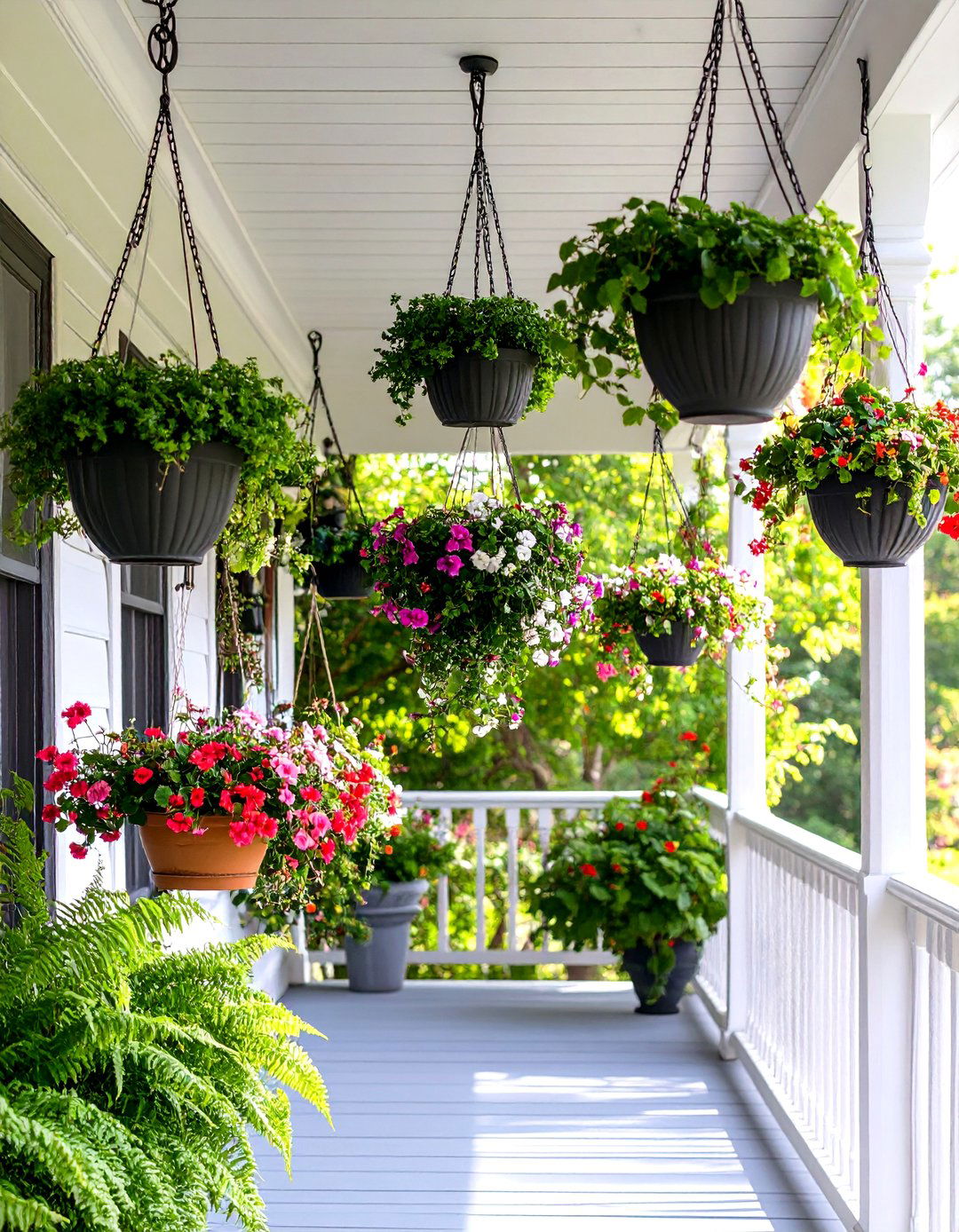
Victorian porches frequently showcased lush greenery in hanging baskets or brackets. Ferns, trailing ivy, and flowering petunias soften the rigid lines of woodworking. Use wrought-iron or decorative macramé hangers, and choose lightweight plastic liners to ease planting and watering. Rotate seasonal blooms—like impatiens in summer and pansies in cooler months—to keep the porch looking fresh year-round. Integrate matching planter boxes on rail tops for layered foliage.
12. Wicker Furniture Sets
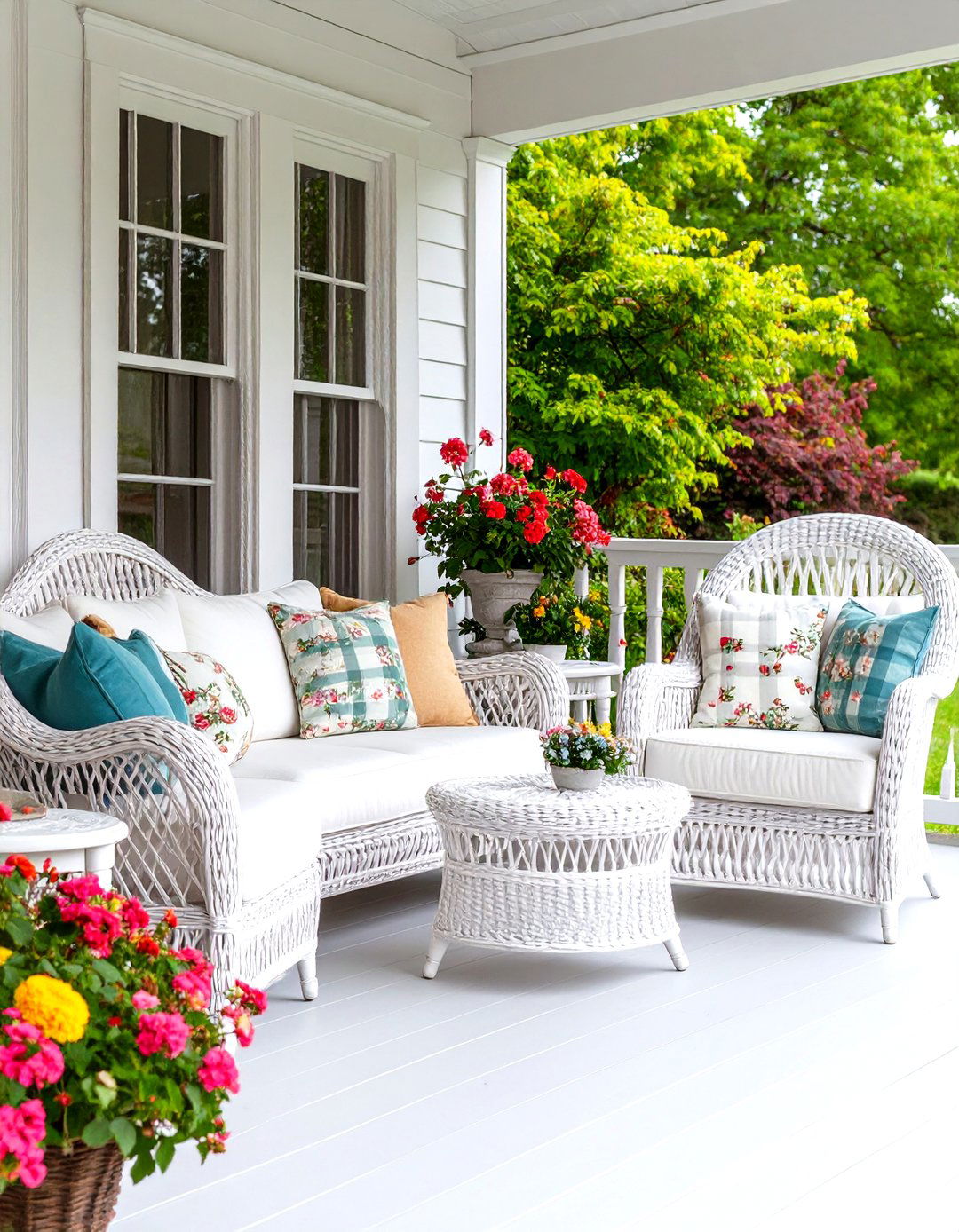
White or natural wicker seating adds vintage charm and textural contrast to painted woodwork. Victorian-style porch furniture often included ornate wicker loveseats, armchairs, and side tables. Modern resin wicker mimics the look with enhanced weather resistance. Arrange tight-weave pieces around a central coffee table to foster conversation. Accent seating with gingham or toile cushions and throw pillows in bold florals to reflect Victorian tastes.
13. Swing Seats and Hammocks
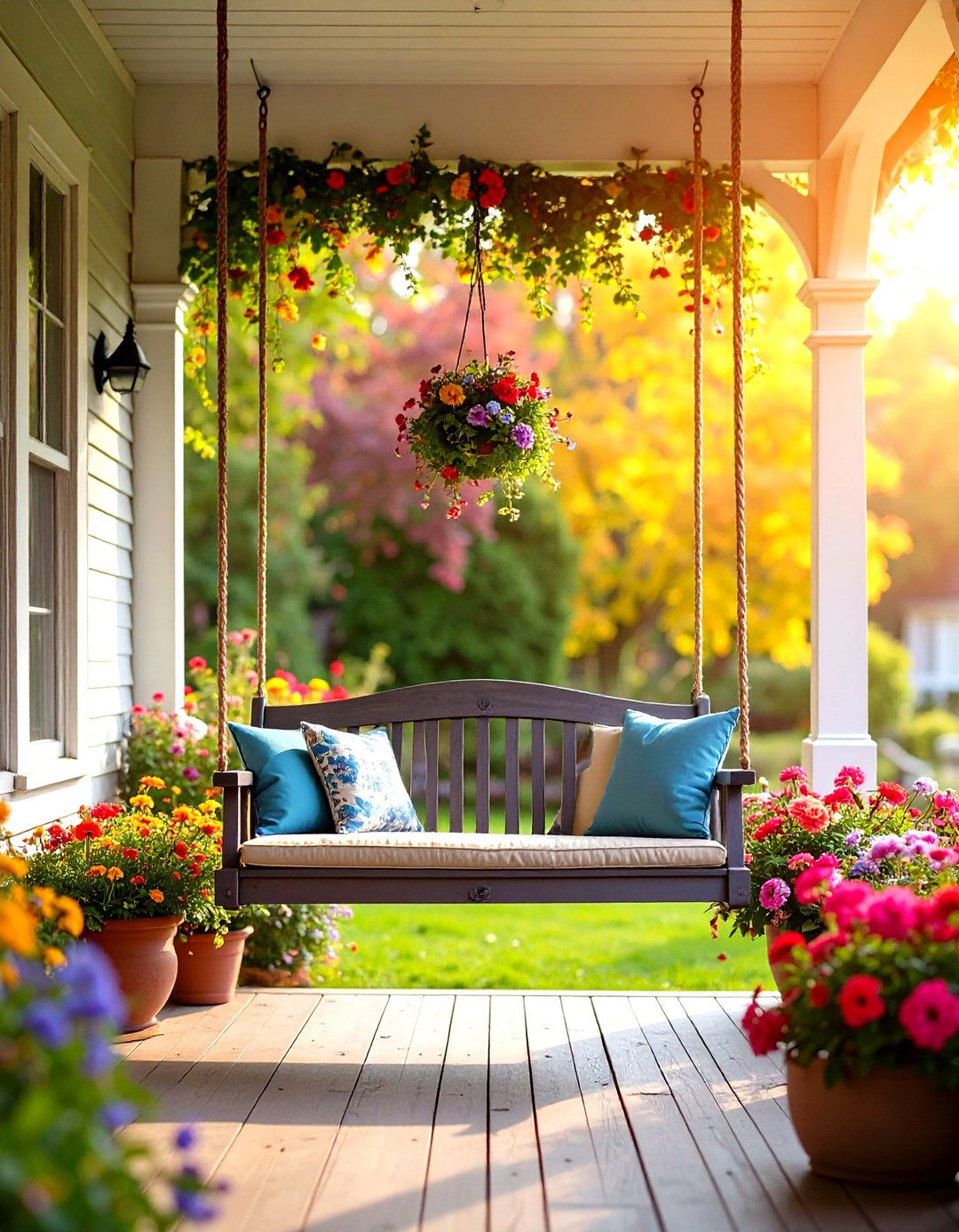
A rope-hung swing or hammock bench embodies the leisurely spirit of Victorian porches. Choose hardwood frames with turned spindles and replace rope with marine-grade cord for durability. Suspend swings from ceiling beams reinforced to handle weight. Position near the edge for optimal breeze, and complement with a side table for drinks. Adding removable cushions ensures comfort while protecting original finishes.
14. Lace Textiles and Curtains
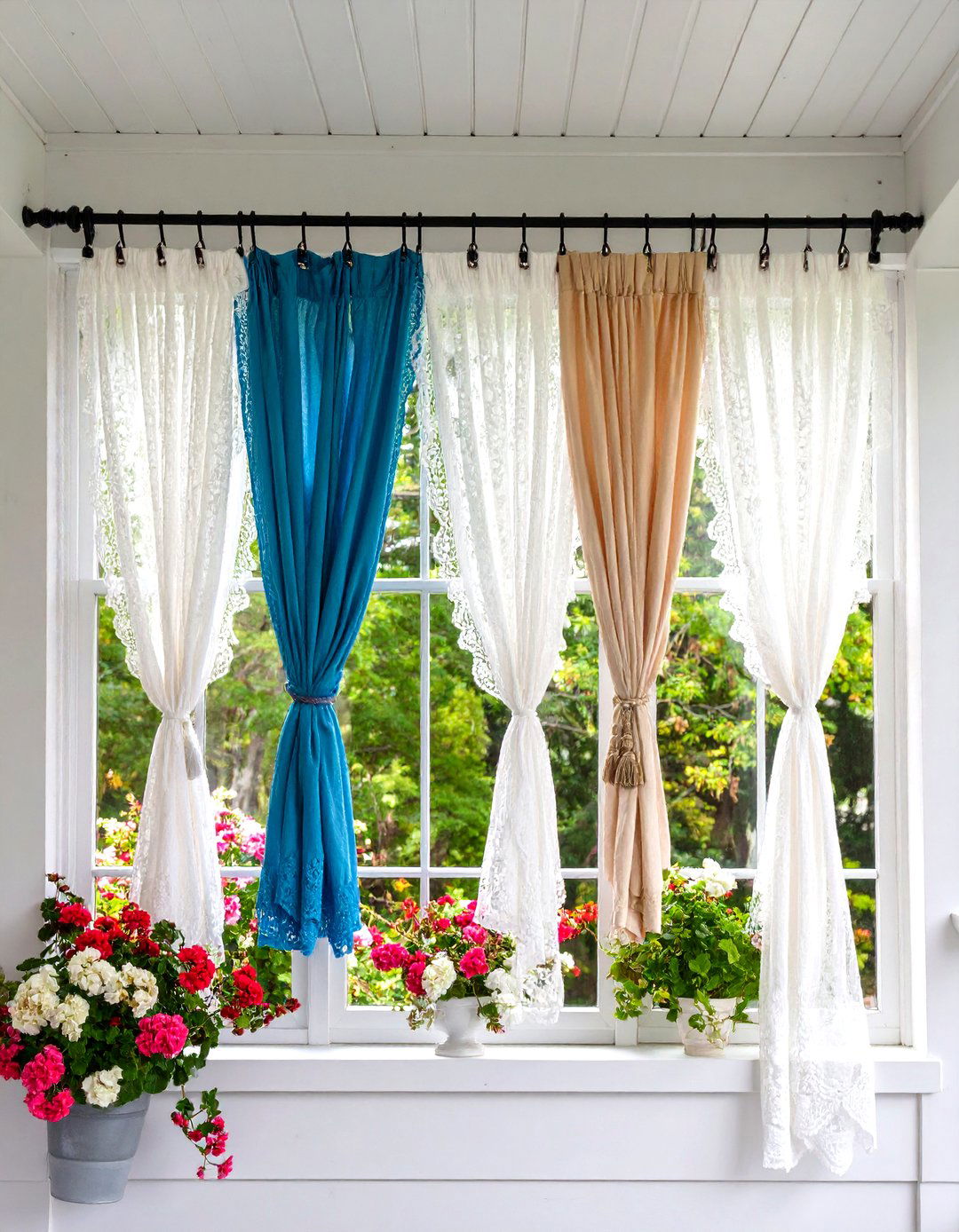
Sheer lace curtains or netting suspended from ceiling rods create privacy and a delicate backdrop for seating areas. Victorian porches often featured lightweight fabrics to filter sunlight and enable breezes while preventing insects. Today’s outdoor-rated polyester blends mimic vintage lace without mildew worries. Tiebacks allow for open or closed configurations, adapting privacy and shade levels throughout the day.
15. Screened-In Sun Porch

Enclosing part of the porch with screens allows for insect-free enjoyment in true Victorian fashion. Retain decorative screen door panels and muntin patterns to echo historic sash designs. Combine with cedar framing painted to match woodwork. For cooler months, install removable Plexiglas storm panels that preserve sightlines. Furnish with rattan chairs and a woven rug for a cozy four-season retreat.
16. Built-In Planters and Window Boxes
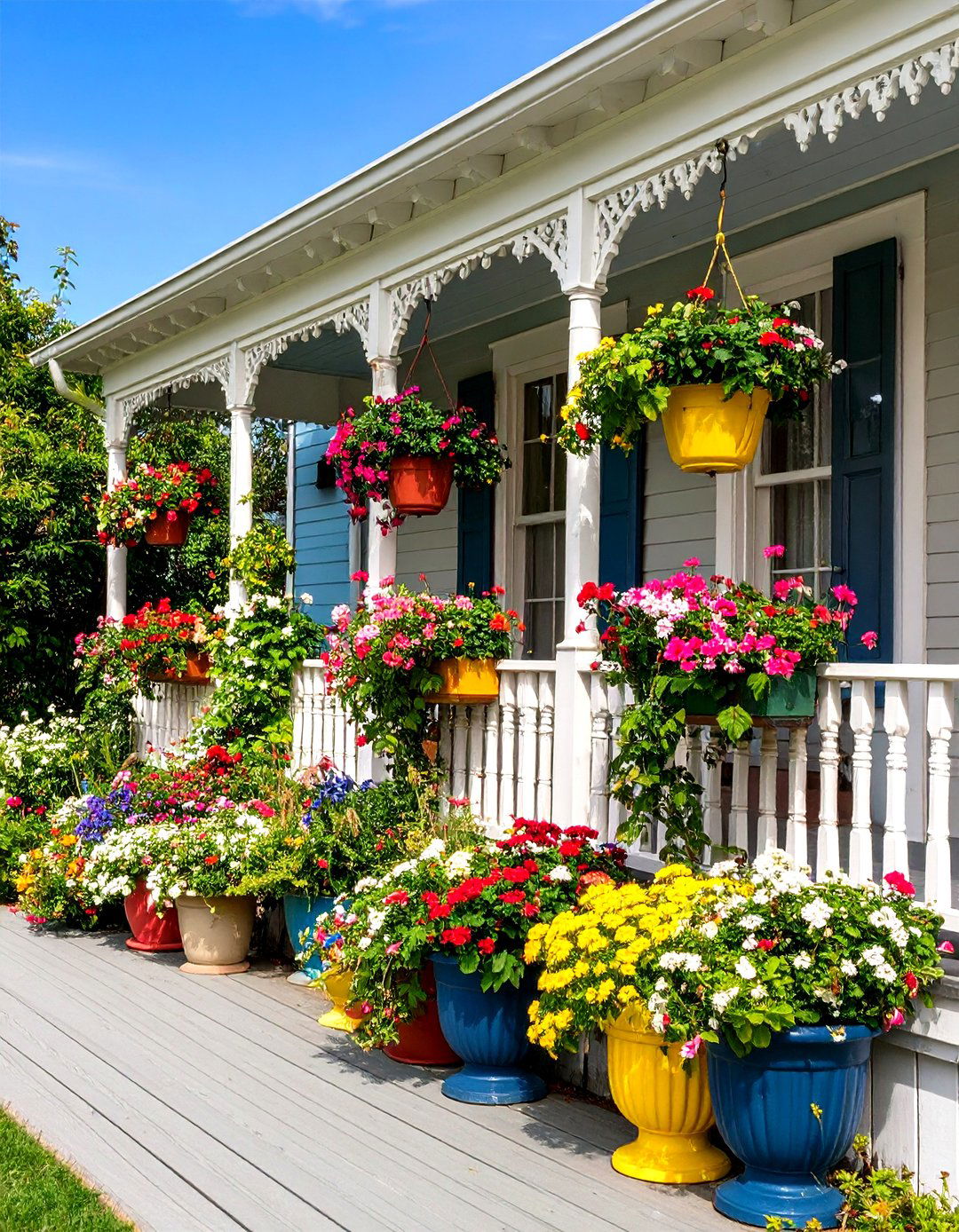
Planters integrated into railings or perched beneath balustrades add horticultural flair. Victorian designs favored box planters with decorative fretwork fronts, brimming with annuals or trailing vines. Use rot-resistant wood or composite materials painted to match trim. Include a built-in drip irrigation line for ease of care. Coordinate planter colors with hanging baskets for unified greenery.
17. Polished Wood Flooring
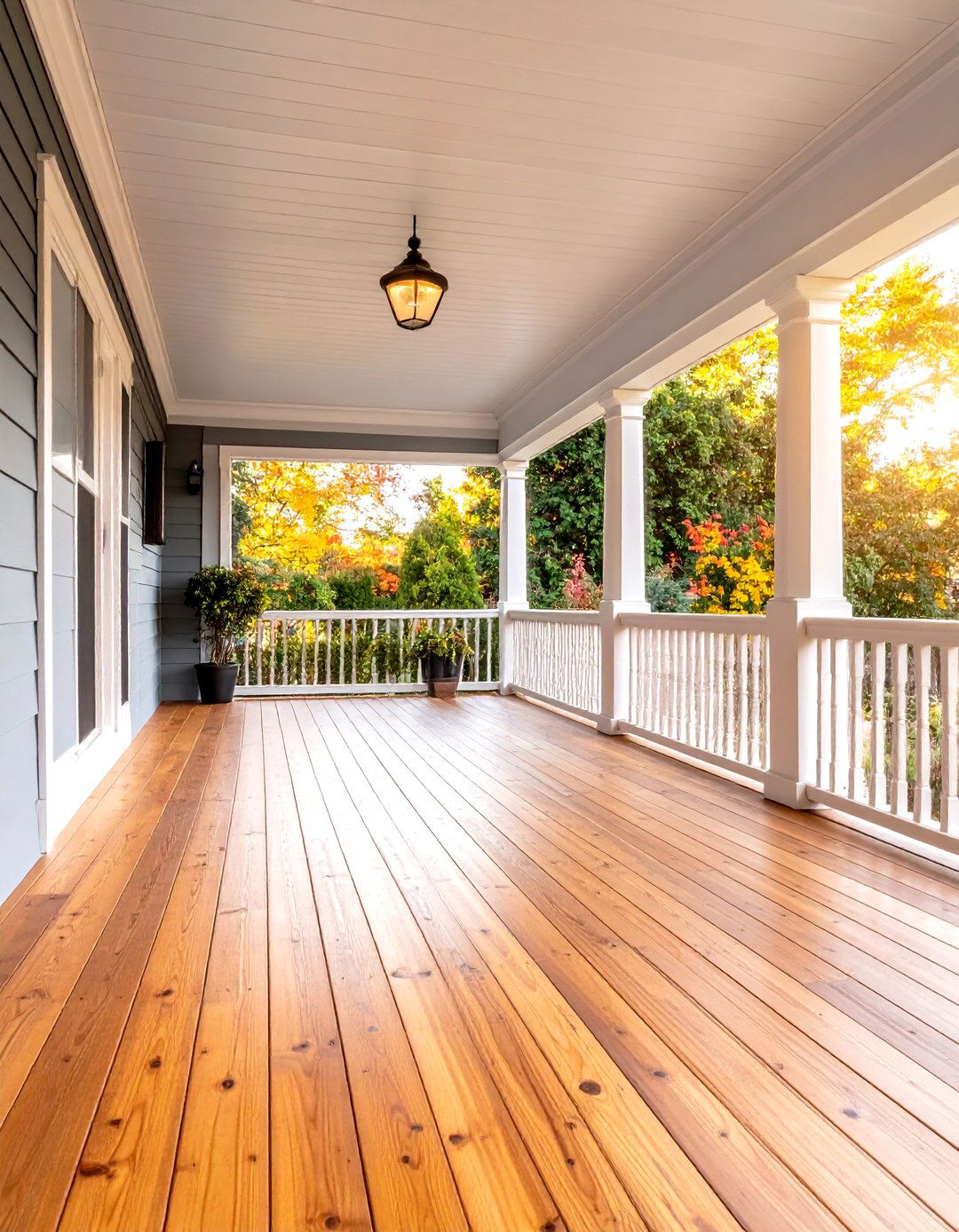
Traditional tongue-and-groove pine or oak boards sanded and stained highlight Victorian woodwork. High-sheen finishes reflect light, enhancing the porch’s warmth. For a modern touch, choose composite planks with wood-grain embossing, offering reduced maintenance. Accent boards around the perimeter create a “picture frame” effect, drawing attention to the seating zone. Ensure proper slope for drainage and install hidden fasteners for a seamless look.
18. Decorative Ceiling Rosette

A carved wooden rosette at the ceiling’s center—often framing a hanging light—adds Victorian elegance overhead. Reproduce historic patterns in polyurethane for lightweight installation. Paint the rosette in a contrasting hue or highlight with metallic leaf for subtle sparkle. Pair with a pendant light that threads through its aperture to unify form and function.
19. Victorian Porch Swing
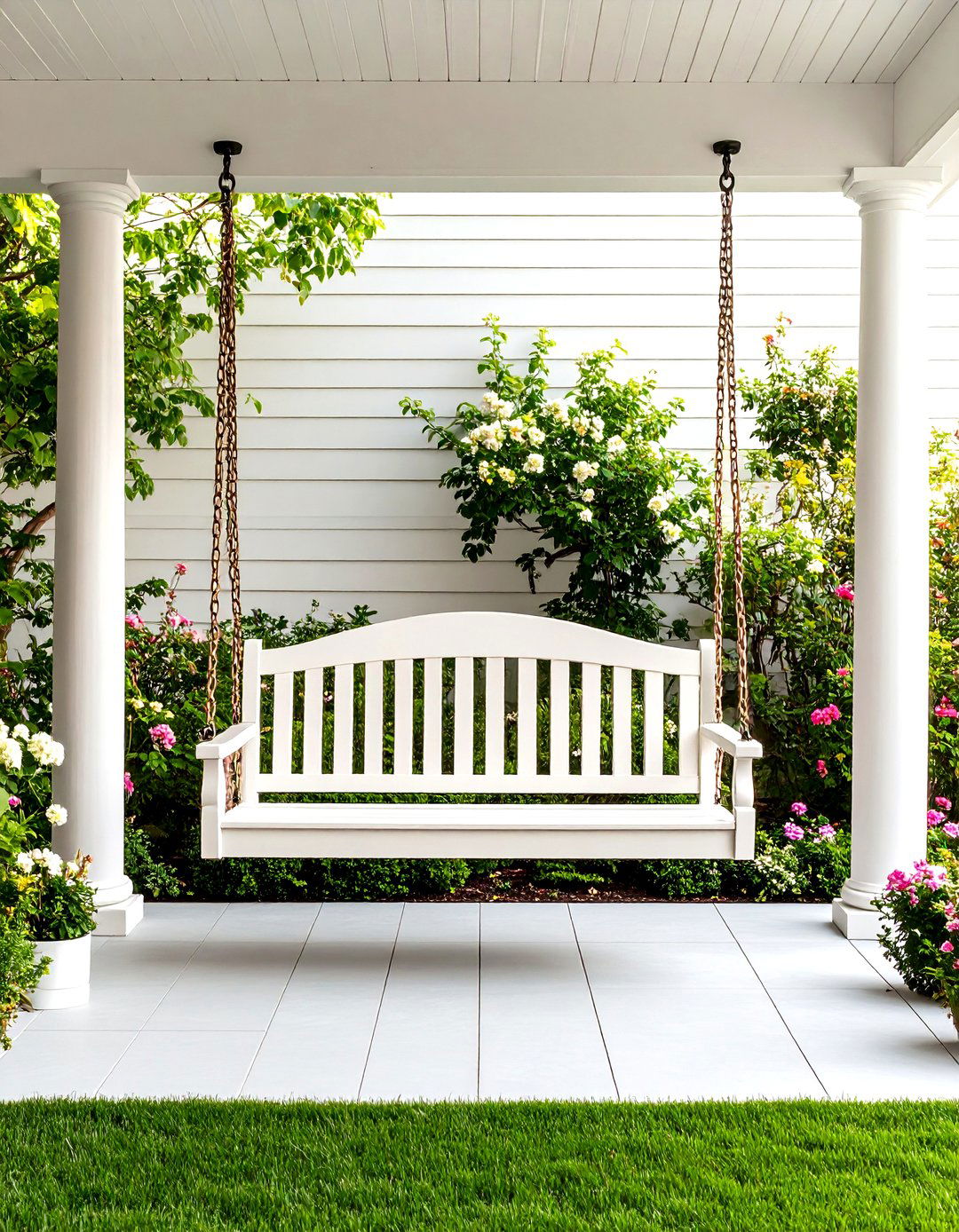
A freestanding A-frame swing with turned posts and a paneled back echoes period furniture. Construct in cedar or redwood for natural rot resistance, and finish with exterior paint to coordinate with trim. Replace standard swing chains with decorative metal straps or rope connectors for character. Position in a nook framed by fretwork brackets to emphasize its anchor point.
20. Seasonal Décor and Lighting
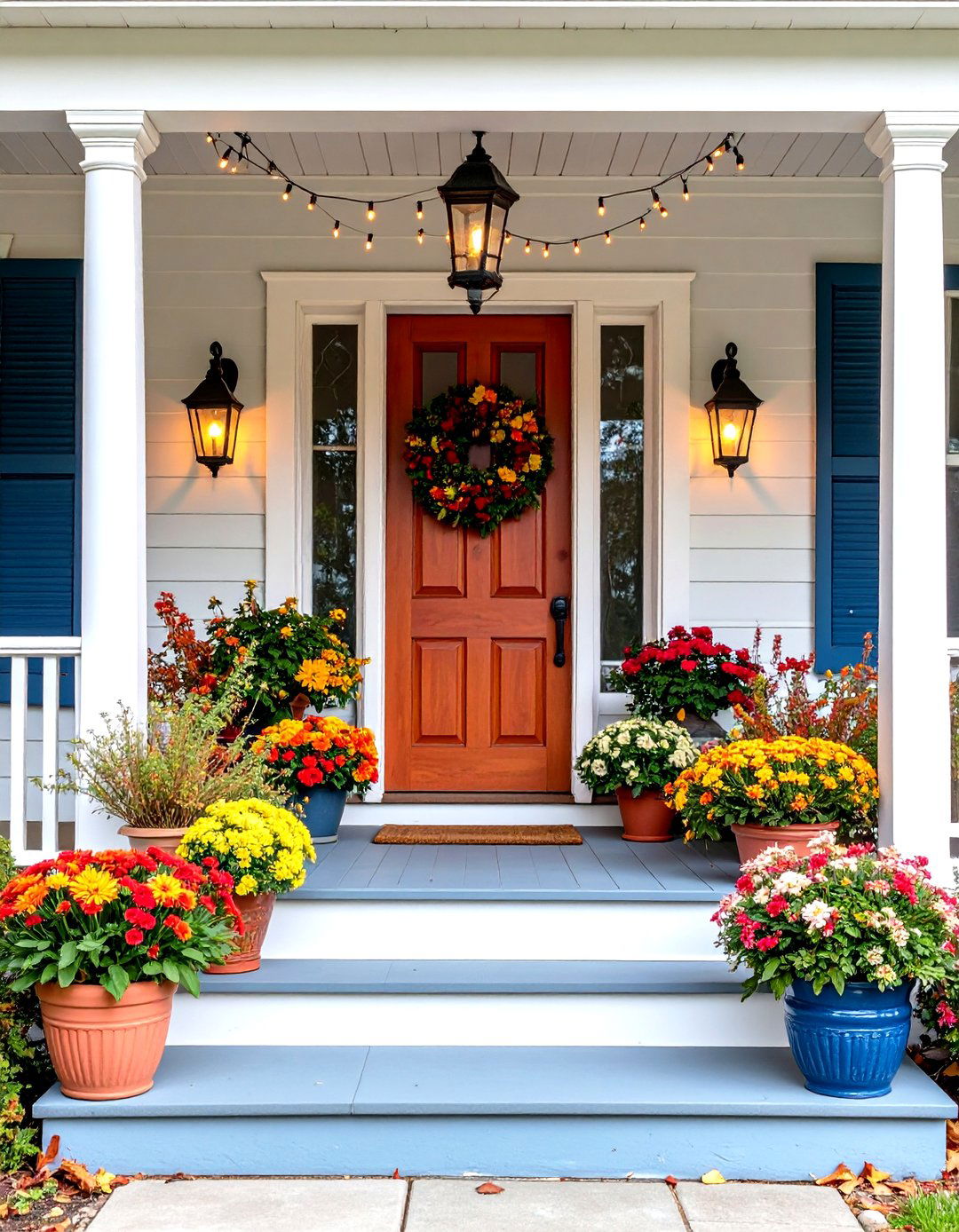
Victorian homeowners adorned porches with seasonal wreaths, lanterns, and ceramic pots, reflecting celebrations and harvests. Today, string lights with warm-white LEDs drape along railings and eaves, while battery-powered lanterns sit on tables for ambience. Swap floral wreaths for autumnal foliage or evergreen garlands in winter. Change out cushions and rugs to mirror seasonal palettes—rich reds for fall, pastels for spring—maintaining the porch’s status as a living part of your home’s aesthetic.
Conclusion:
By blending authentic Victorian details—such as gingerbread trim, spindlework railings, and pastel paint schemes—with durable modern materials and functional layouts, you can create a porch that honors the past while serving today’s needs. Whether you prefer a breezy screened-in enclosure or an open wraparound design, integrating elements like stained glass accents, patterned tiles, and seasonal décor ensures your porch remains both beautiful and inviting across the seasons. With thoughtful planning and quality craftsmanship, your Victorian-inspired porch will become a cherished centerpiece of your home.


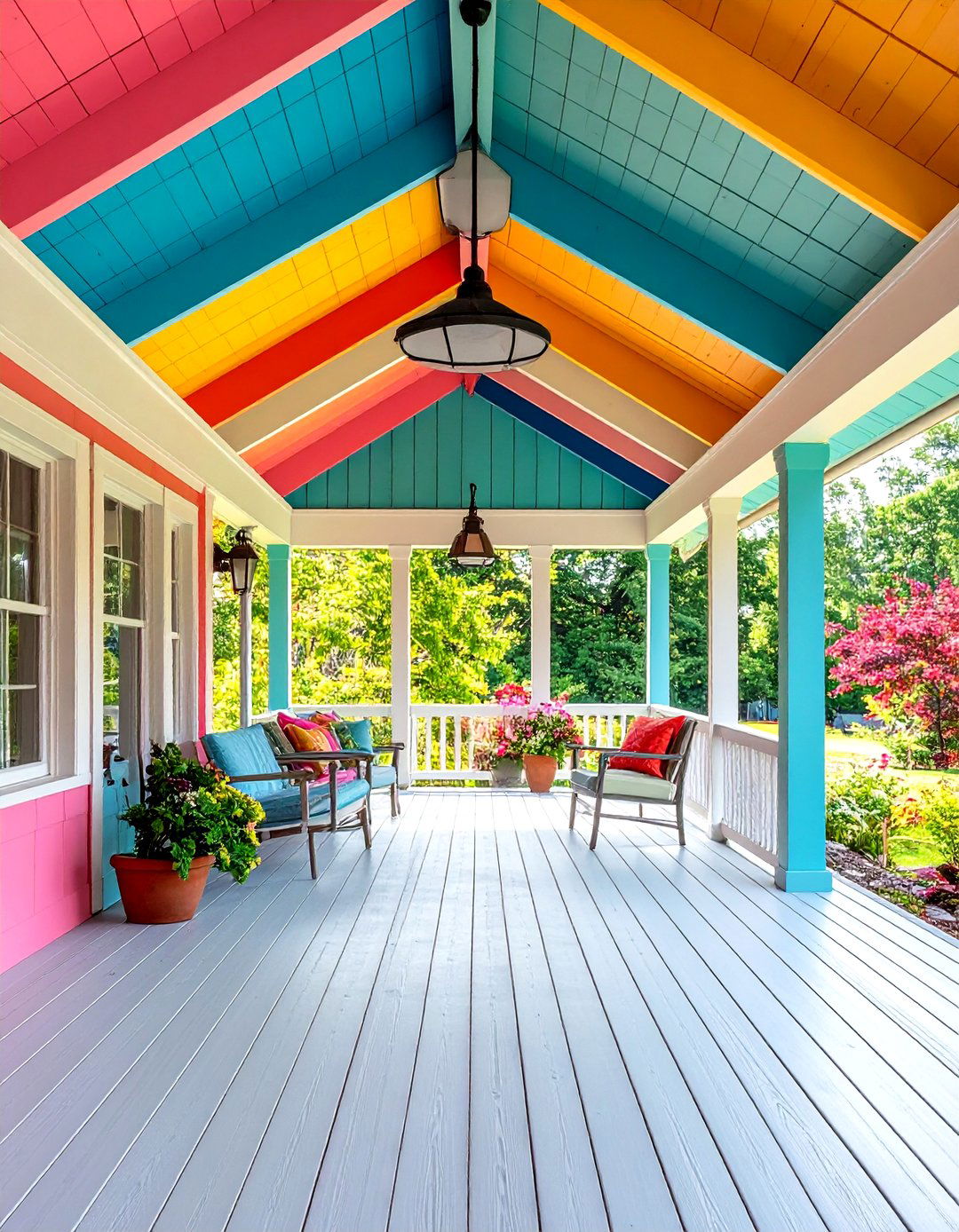
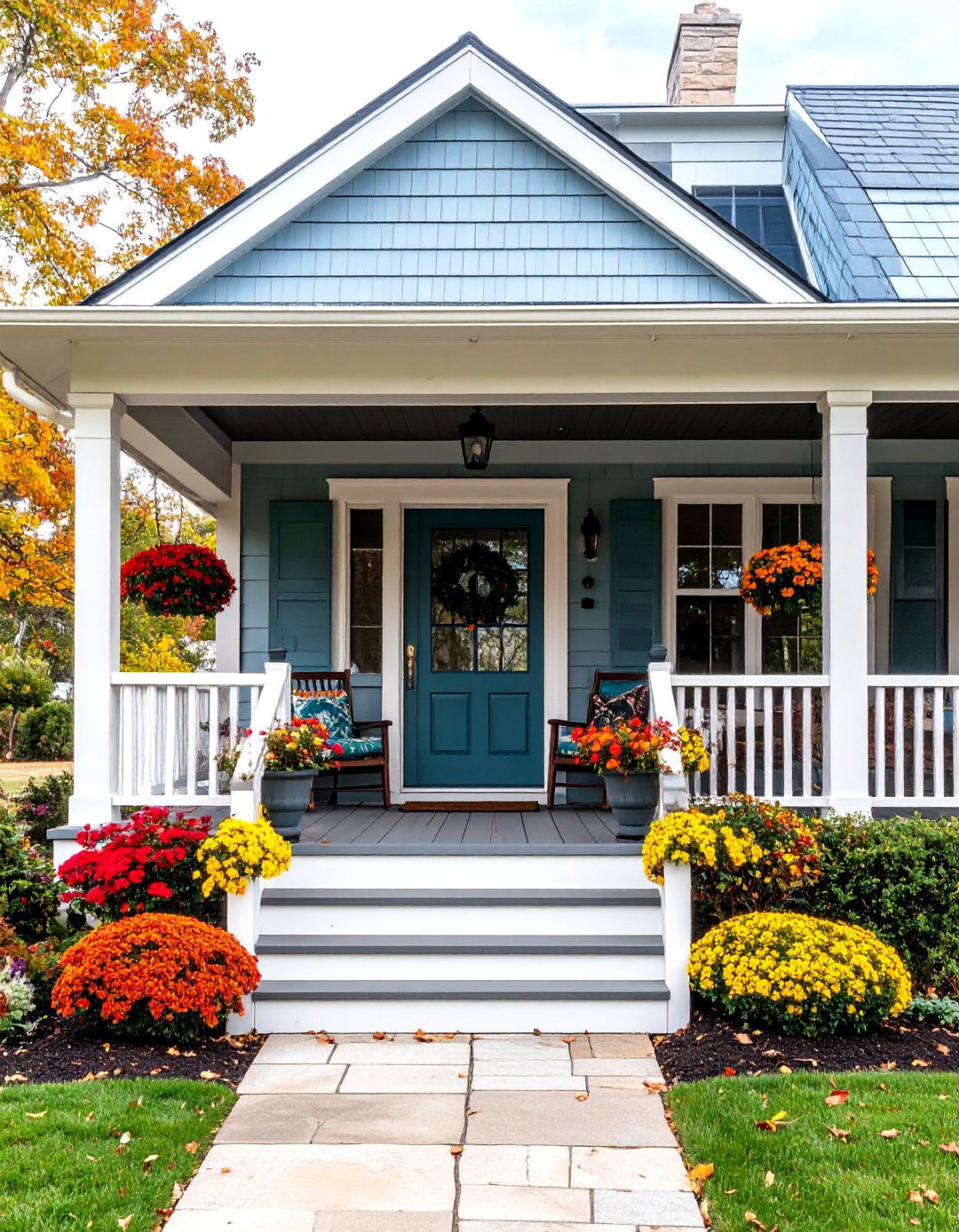

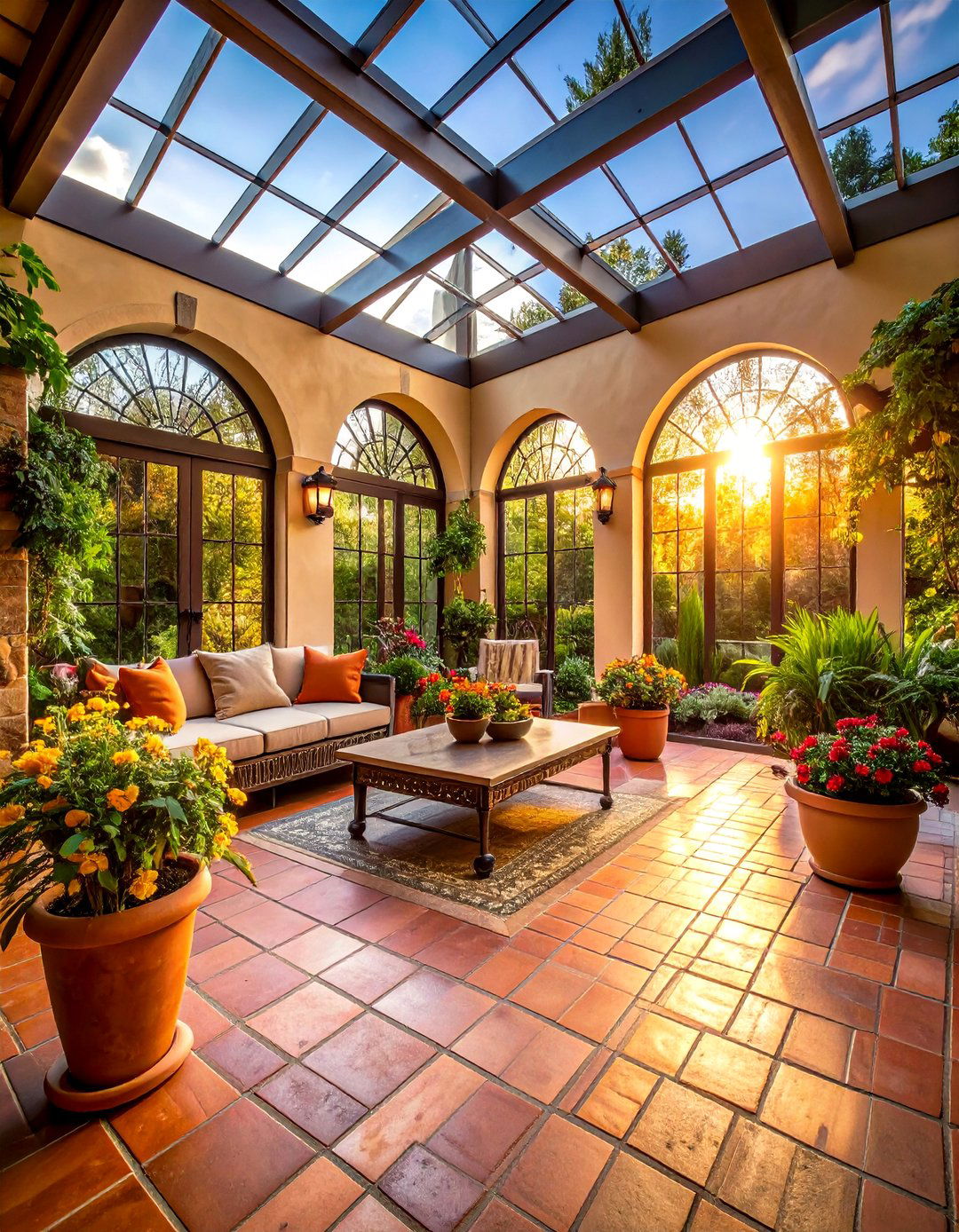
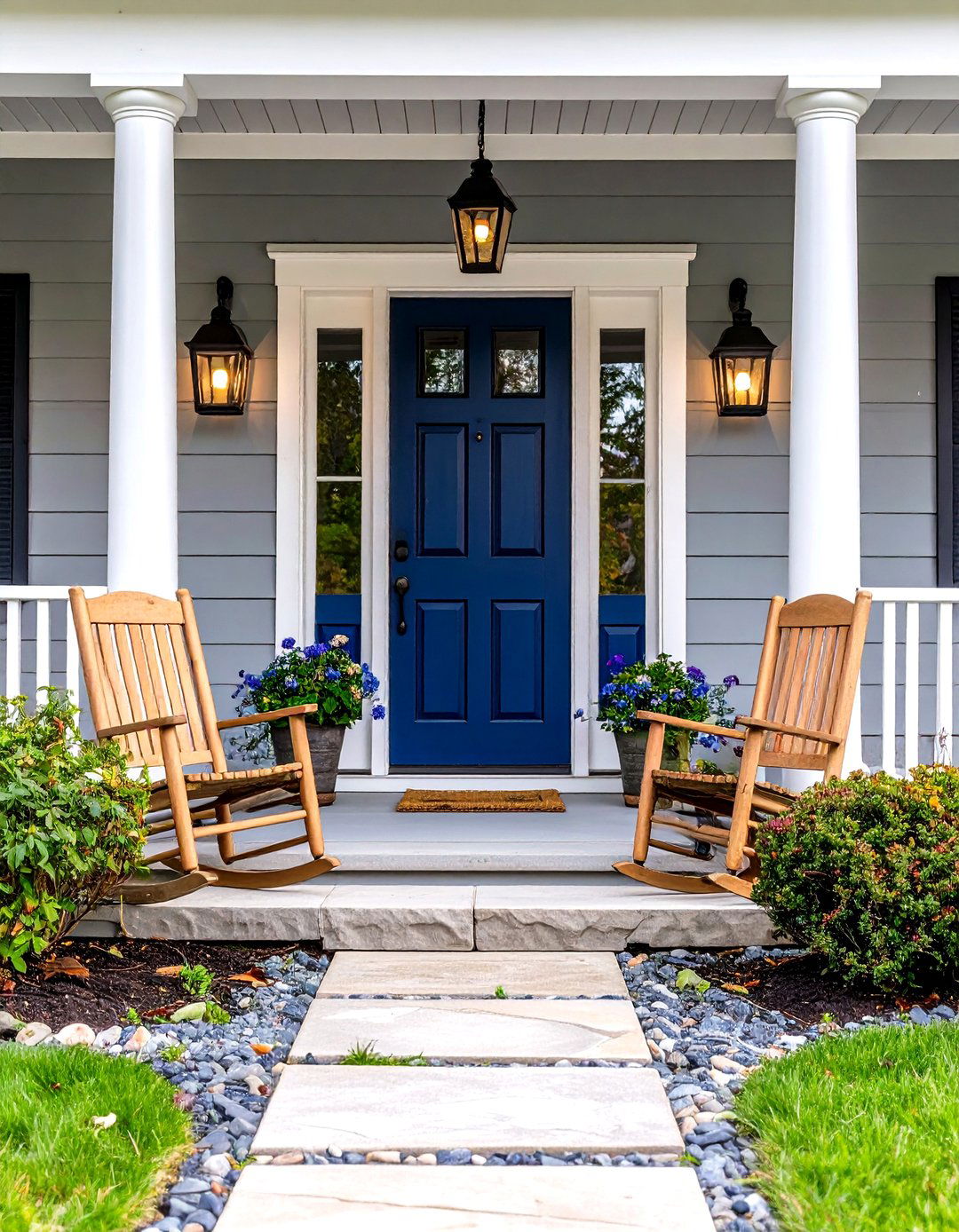
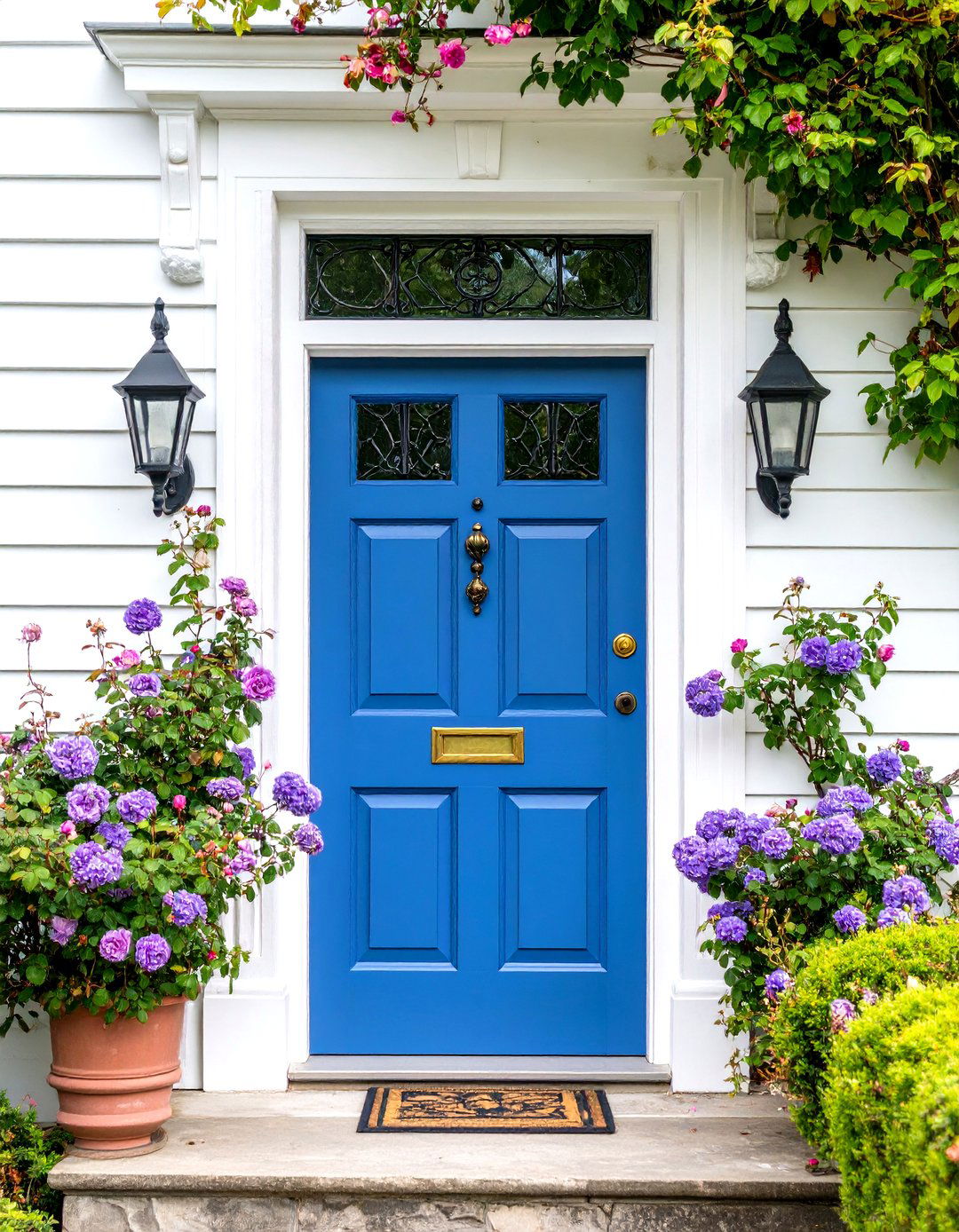
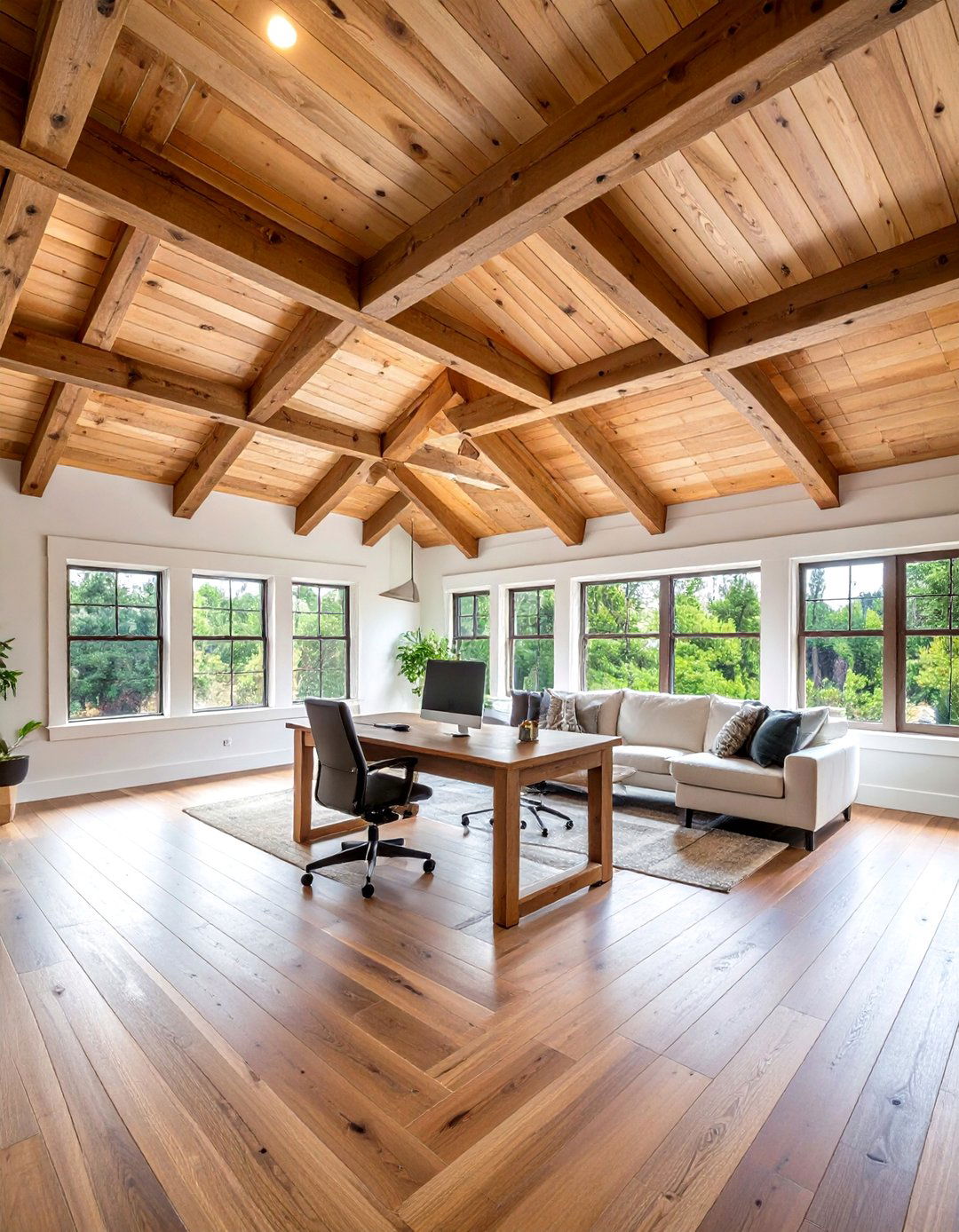



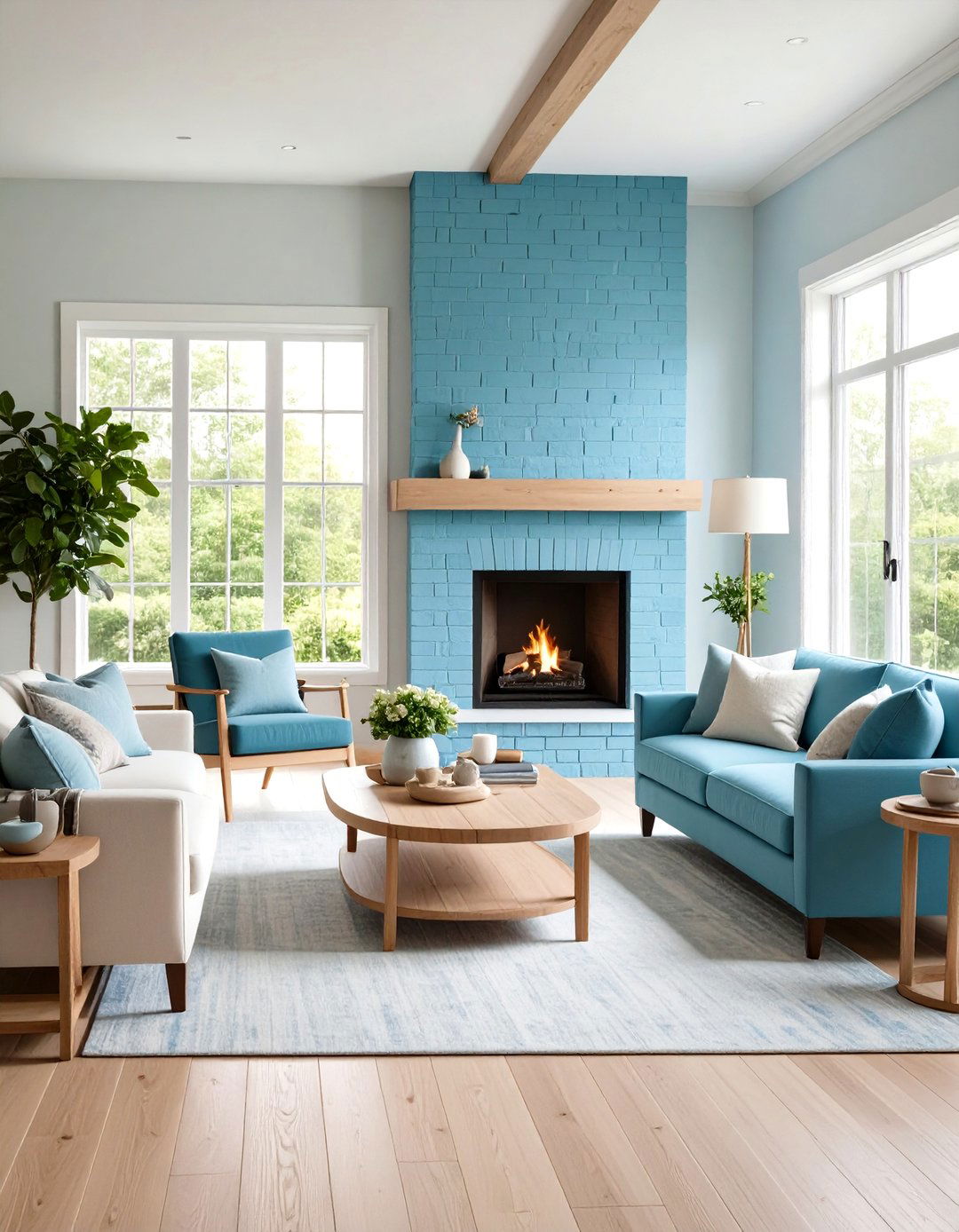
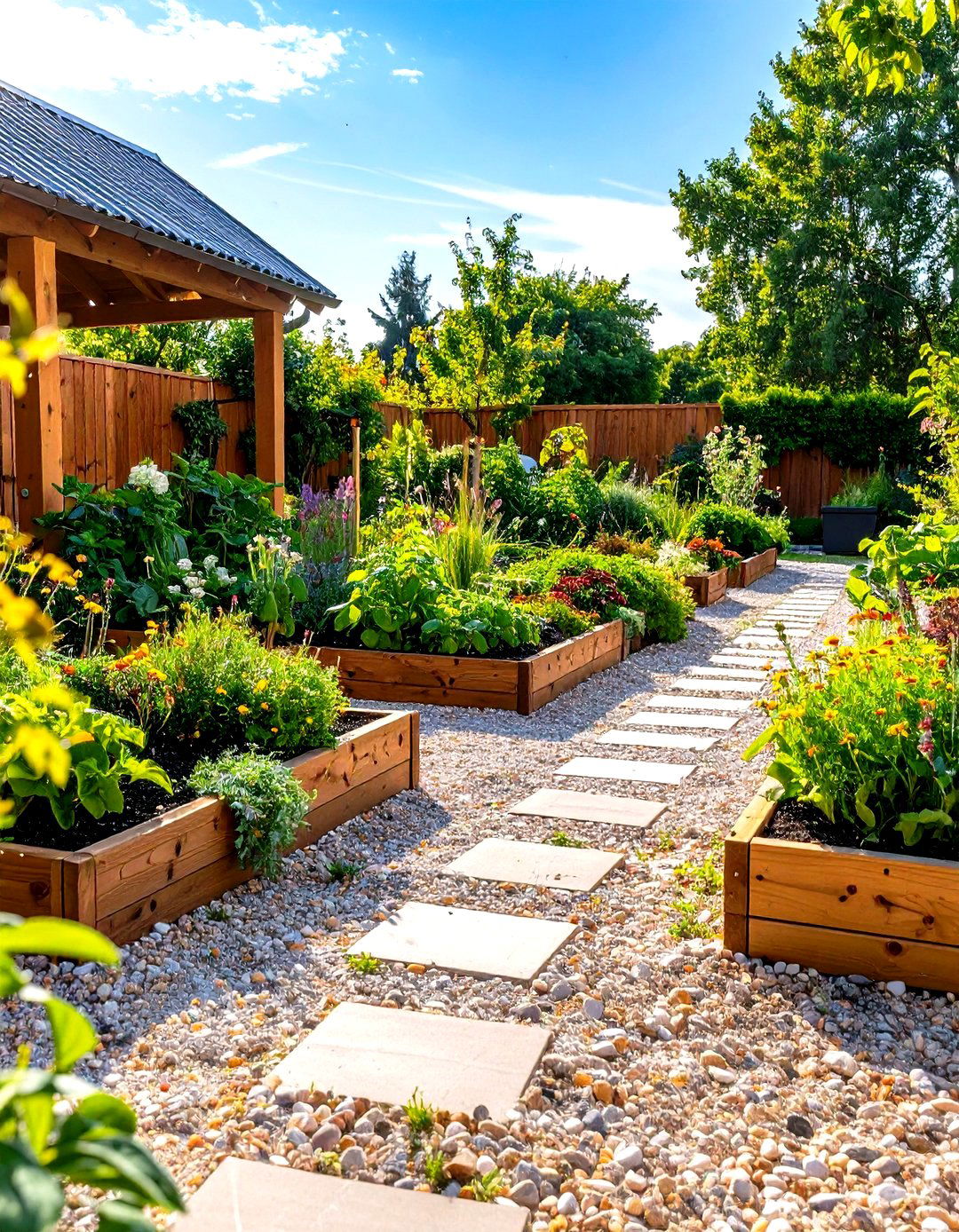
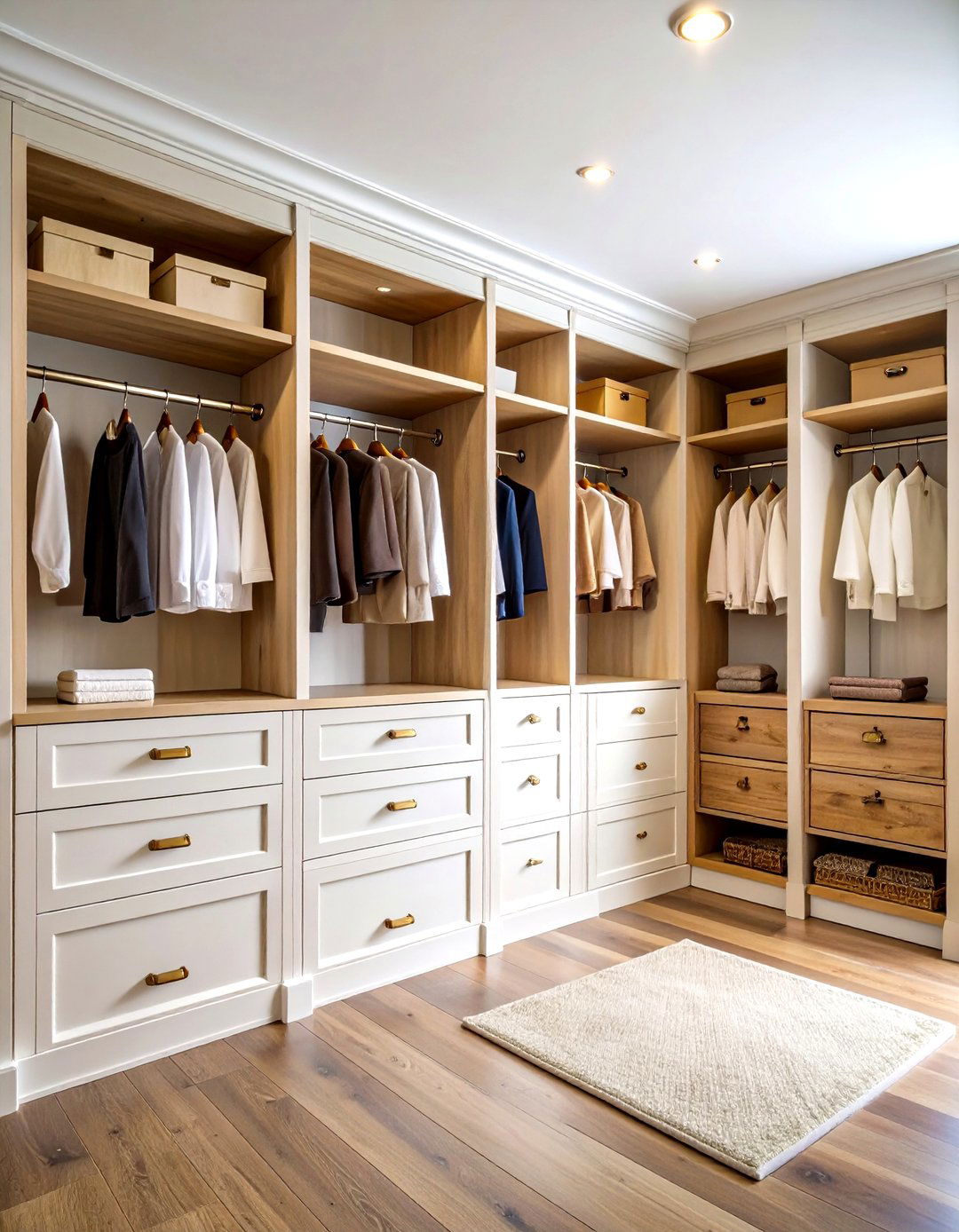
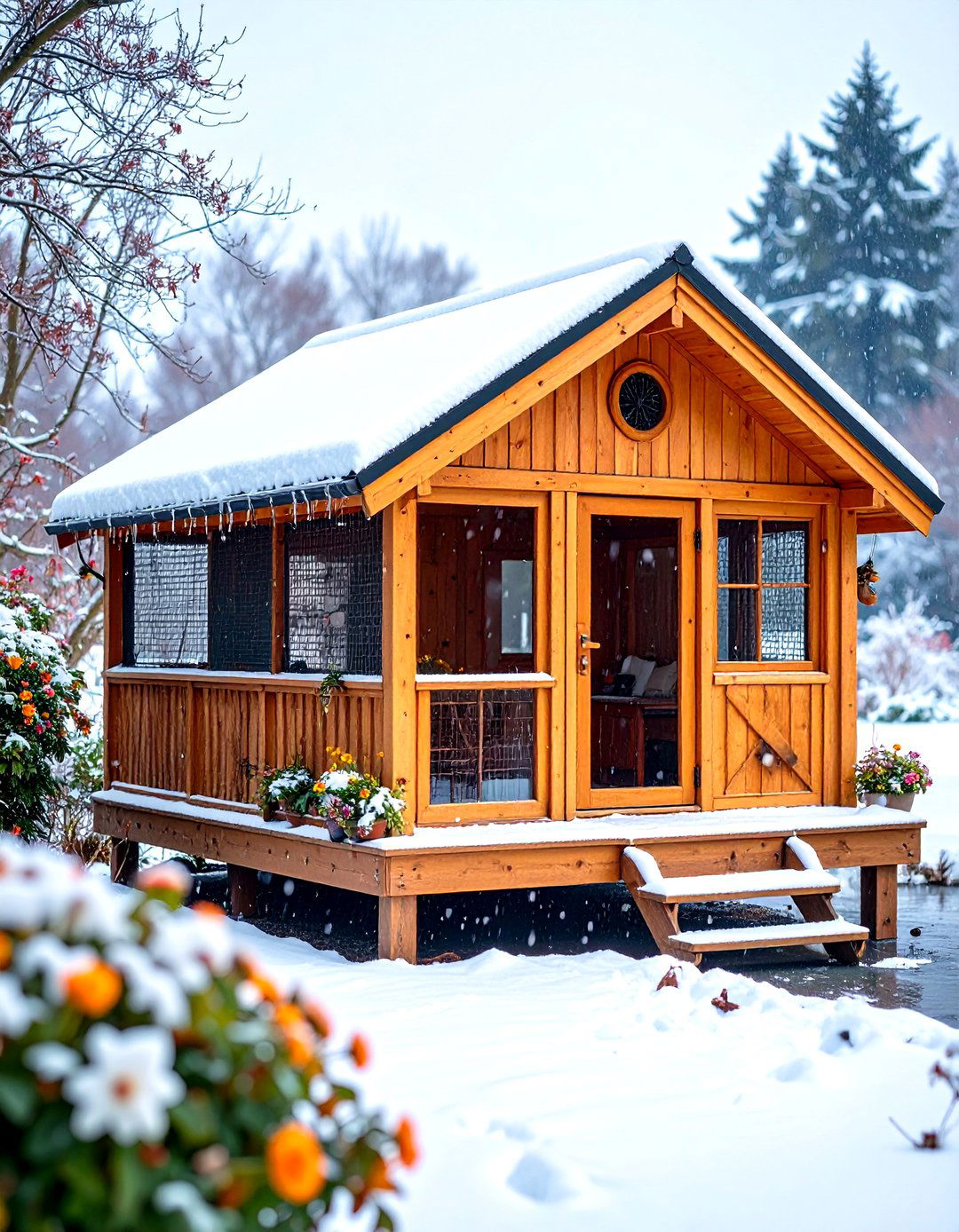

Leave a Reply